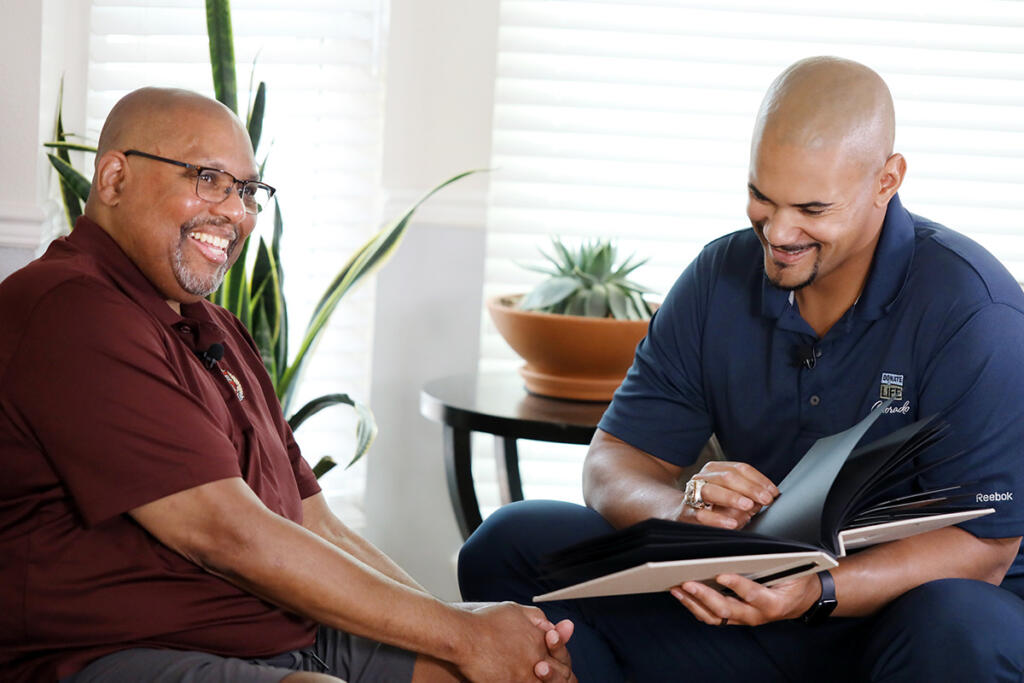Understanding Donation

Types of Donation
Donor Alliance is focused on saving and healing lives through organ and tissue donation for transplantation throughout Colorado and most of Wyoming. But it’s important to understand the distinction between deceased donation and living donation, as well as between organ donation and tissue donation.
Deceased Organ Donation
Deceased organ donation is giving the gift of life after you pass away by providing an organ, organs or a partial organ to be transplanted into one or more people. While the list of organs and tissues that can be successfully transplanted continues to grow with advances in technology, eight of the major organs can be transplanted, along with corneas and tissues, including bones, bone marrow, skin and heart valves.
Tissue Donation
While donated organs have to be transplanted within hours of recovery, tissue donations can be preserved and transplanted for up to five years. Donated tissues can be used to help and heal people in several different and meaningful ways. Here are some of the tissues that can be donated and transplanted to those in need:
Bone/Tendons
Heart Valves
Veins/Arteries
Skin
Corneas
The Organ and Tissue Donation Process
Diagnosis
Hospitals and emergency medical professionals will make every effort to save a patient’s life, regardless of their status as a donor. If a person is unable to survive, the organ and tissue donation process will begin in one of two ways: cardiac death, when the heart is no longer able to beat on its own, and brain death, which is the irreversible loss of function of the brain, including the brain stem.
Referral
When a patient arrives at a hospital with a severe brain injury and meets certain defined clinical triggers, the hospital critical care staff contacts Donor Alliance. While the hospital continues lifesaving efforts, Donor Alliance determines medical suitability and whether the patient is a registered organ and tissue donor. Our team, in collaboration with hospital staff, ensures that the family is cared for and offered the appropriate donation option should death be declared.
Family Discussion
Unless the family brings up the topic of donation first, Donor Alliance will only discuss donation after the family has been informed of the patient’s imminent death and the patient is evaluated for medical suitability. If the family is interested in donation and has made the decision to withdraw treatment, and the patient meets certain medical criteria, the option to donate organs and tissue is presented by a Donor and Family coordinator from Donor Alliance. The decision to withdraw treatment is made independently of the decision to donate. That way, if the donation falls through, the family has still made the correct decision for their loved one, without having the possibility of donation as a factor.
Medical Evaluation
The donor is kept on ventilation while all necessary tests and procedures are completed which may include electrolyte replacement, blood replacement, advanced imagery and diagnostic procedures as well as minor surgical procedures. Once all procedures and medications necessary to assist with organ function are completed, medical management of the donor is continued while the donor is scheduled for surgery to recover organ and tissue.
Organ Donation
Matching
After the medical evaluation, Donor Alliance accesses UNet, a centralized computer network maintained by the United Network for Organ Sharing (UNOS), to enter donor information, including height, weight, blood type, and lab values. UNet generates a ranked list of patients who are suitable to receive each organ. The organ is offered to the transplant center for the first person on the list. At times, the top transplant candidate will not get the organ for one of several matching reasons. The process continues until a match is made. Once a patient is selected and informed and all testing is complete, surgery is scheduled and the transplant takes place.
Tissue Donation
Recover Tissue
If the donor’s tissues are eligible to be donated, a surgical team recovers them in an aseptic surgical procedure. To show respect to the donor, any incisions are closed and the body is reconstructed in a way that will still allow a viewing or open casket funeral. The recovered tissues are then used to create numerous grafts for transplant.

Living Organ Donation
Although Donor Alliance is not involved in the living organ donation process, living donation is an incredible way you can help save the life of someone waiting for an organ transplant. Through living donation, a living person can donate a kidney or part of the liver, lung, intestine or pancreas to another person in need of a transplant. Each potential living donor must go through a full medical evaluation that includes lab tests, a physical examination, and a psycho-social examination. The decision about whether to accept the living donor is then made by the health care team at the transplant center.